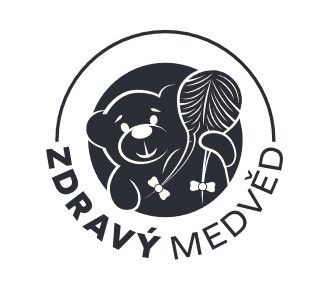Vitamin E
Synonym: tocopherol
Characteristics: Vitamin E was first discovered in 1922 at the University of California, Berkeley, where it was observed that rats needed it to maintain their fertility. This made this vitamin known to people as a nutrient against sterility. Vitamin E occurs naturally in some foods, is added to others, and is available as a dietary supplement. Vitamin E exists in eight chemical forms, but only alpha- (or α-) tocopherol is the form needed by humans. "Vitamin E" is a collective name for a group of fat-soluble compounds with significant antioxidant properties. Vitamin E therefore stops the production of reactive oxygen species (free radicals) arising during fat oxidation. It is thought that by limiting the production of free radicals, vitamin E may help prevent or delay chronic diseases. Vitamin E is also involved in immune function, cell signaling, regulation of gene expression and other metabolic processes.
Absorption: Vitamin E is absorbed from 17‒79%. Absorption is increased by the presence of lipids in the diet and is dependent on sufficient digestion of fats including excretion of bile acids.
Dietary supplements: Vitamin E supplements usually provide only alpha tocopherol, although "mixed" products containing other tocopherols are available. Naturally occurring alpha-tocopherol exists in one stereoisomeric form. In contrast, synthetically produced alpha-tocopherol contains equal amounts of its eight possible stereoisomers; serum and tissues consume only four of these stereoisomers. Therefore, a certain amount of synthetic alpha-tocopherol is only half as active as the same amount of the natural form. Alpha-tocopherol in dietary supplements and fortified foods is often esterified to extend its shelf life while protecting its antioxidant properties. The body hydrolyzes and absorbs these esters (alpha-tocopheryl acetate and succinate) as efficiently as alpha-tocopherol.
Natural sources: Many foods contain vitamin E. Nuts, seeds, and vegetable oils (olive, sunflower and corn) are among the best sources of alpha-tocopherol, as well as green leafy vegetables and fortified (enriched) cereals. Non-lipid sources include spinach, kale, sweet potatoes, egg yolk, liver, soybeans, asparagus, and dairy products such as butter and milk. Like all fat-soluble vitamins, vitamin E is susceptible to oxidation and destruction during food preparation and storage, frying, processing, grinding, and freezing. Therefore, processed foods may not provide sufficient income.
Effect: The mechanisms by which vitamin E promotes health mainly include its antioxidant function and its role in anti-inflammatory processes, inhibition of platelet aggregation and strengthening of immunity. It is recommended in the prevention of cardiovascular diseases, Alzheimer's disease, cancer, supports the immune system, helps with PMS and gynecological problems, and supports fertility in men.
Deficiency: Vitamin E deficiency is rare. Only premature babies with very low birth weight (<1,500 grams), patients with cystic fibrosis, Crohn's disease, cholestatic liver disease, pancreatitis, and biliary obstruction may be vitamin E deficient. Since the digestive tract to absorb vitamin E requires fat, people with fat absorption disorders are more likely to suffer from a deficiency. Deficiency symptoms include peripheral neuropathy (nerve damage), ataxia (clumsiness of movement), skeletal myopathy (weakness), retinopathy (disease of the retina), and impaired immune response.
Recommended daily dose: 14+: 15 mg for men, 15 mg for women (15 mg during pregnancy, 19 mg during breastfeeding). Many researchers believe that it is difficult for an individual to consume more than 15 mg/day of alpha-tocopherol from food alone without simultaneously increasing their fat intake above recommended levels.
Adverse effects: They are dose-dependent, occurring only at very high doses (>1200 IU=international units/day) and include diarrhea, flatulence, nausea, and palpitations.
Interactions: Any drug that reduces the absorption of dietary fat will also reduce the absorption of vitamin E. These include cholestyramine, isoniazid, orlistat, and sucralfate. Vitamin E can inhibit platelet aggregation and antagonize vitamin K-dependent clotting factors. Consequently, the use of large doses together with anticoagulant or antiplatelet drugs such as warfarin may increase the risk of bleeding, especially in conjunction with low vitamin K intake. Amount of supplemental vitamin The E required to produce clinically significant effects is unknown but probably exceeds 400 IU/day. Oncologists generally do not recommend using antioxidant supplements during chemotherapy or radiation therapy, as they may reduce the effectiveness of the treatment.
Pregnancy: safe in usual doses.
Breastfeeding: safe in usual doses.
Toxicity: Vitamin E is relatively non-toxic. It is not stored in the body as easily as other fat-soluble vitamins, and up to 60-70% of the daily dose is excreted in the stool. Long-term doses of up to 3200 mg/day were tested and only mild side effects were observed.
Caution: People with a blood clotting disorder, increased bleeding, history of hemorrhagic stroke, vitamin K deficiency, or at risk of pulmonary embolism or thrombophlebitis should use high-dose dietary supplements under medical supervision.
Vitamin E
Chat with us on WhatsApp



